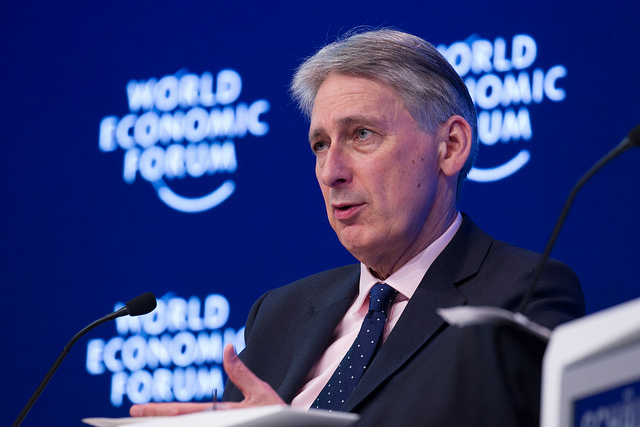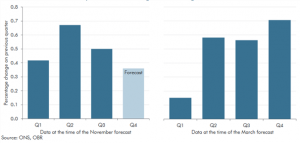
Philip Hammond, Chancellor of the Exchequer of the United Kingdom. Image via World Economic Forum
The British Finance Minster, Philip Hammond delivered his spring budget on Wednesday, marking the last budget release before the UK government begins the Brexit talks with the EU.
Britain’s growth forecasts for the economy this year was raised to 2% but revised lower over the next three years, according to the Office for Budget Responsibility (OBR). The upward revision to this year’s economic growth followed a pattern in the recent UK data which has been consistently revised higher although the post-Brexit scenario remains gloomy.
Growth forecasts for 2019 and 2020 were revised lower compared to the previous forecasts given in November. For 2017, growth is expected to average around 2%, from 1.4% previously.
The key points from the budget on its forecasts were:

UK Growth Forecasts, Revised March 2017 (Source: ONS, OBR)
Growth in the UK was expected to fall sharply after the EU referendum that was held in June last year. However, growth managed to beat the odds and came out 1.8% on an annualized basis for 2016. Incidentally, it was also higher than all other G7 countries with the exception of Germany.
However, the optimism failed to buoy the UK Chancellor as he announced a tighter budget, outlining plans to narrow government balance sheets ahead of the key exit negotiations with the EU.
Among many things, the tax hike for self-employed was the most widely discussed point as it is expected to potentially hit 2.5 million Britons. A large social care fund was also set out but was undermined by the OBR which said that the government was unlikely to meet its stated fiscal objective.













Leave A Comment